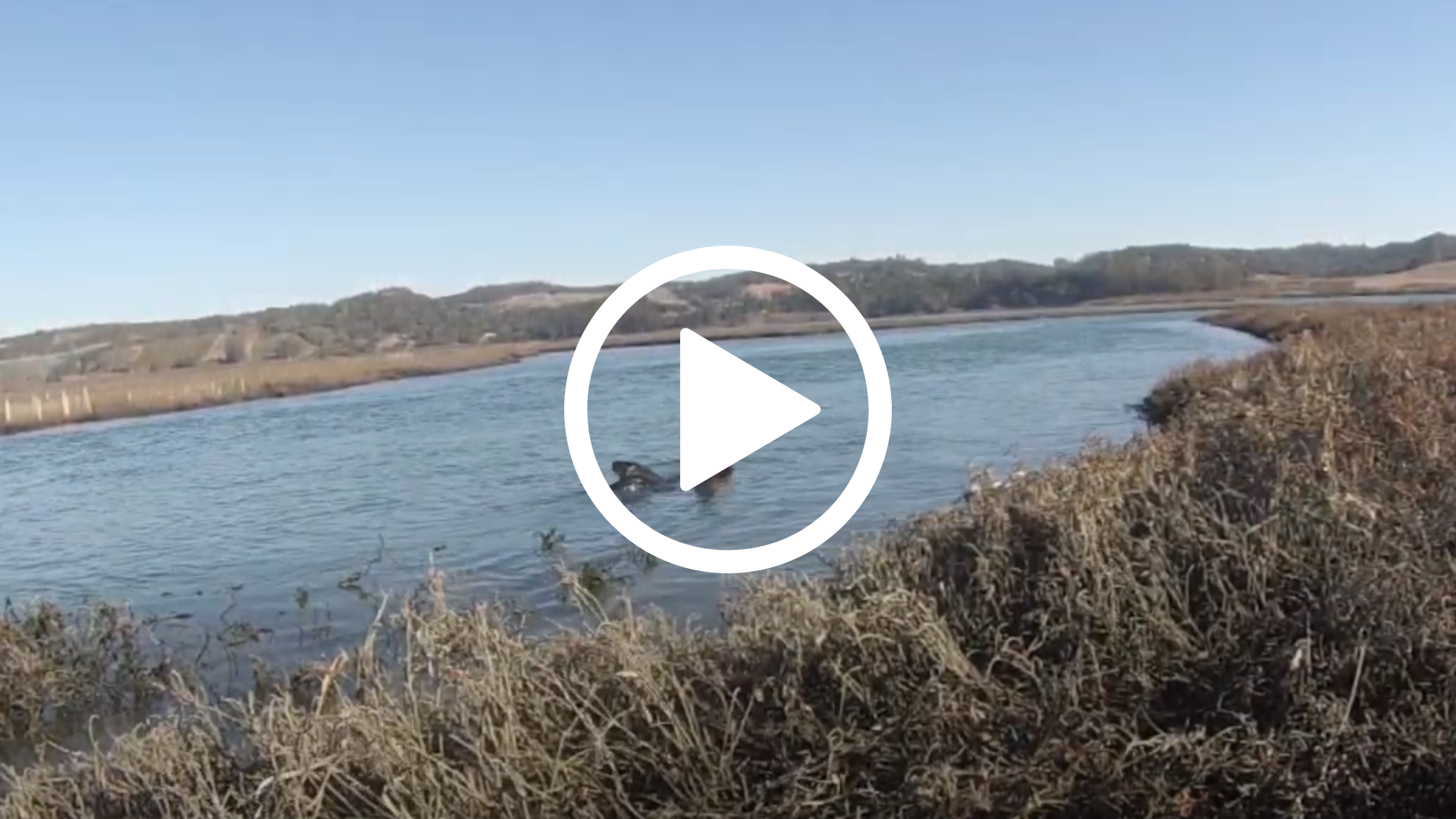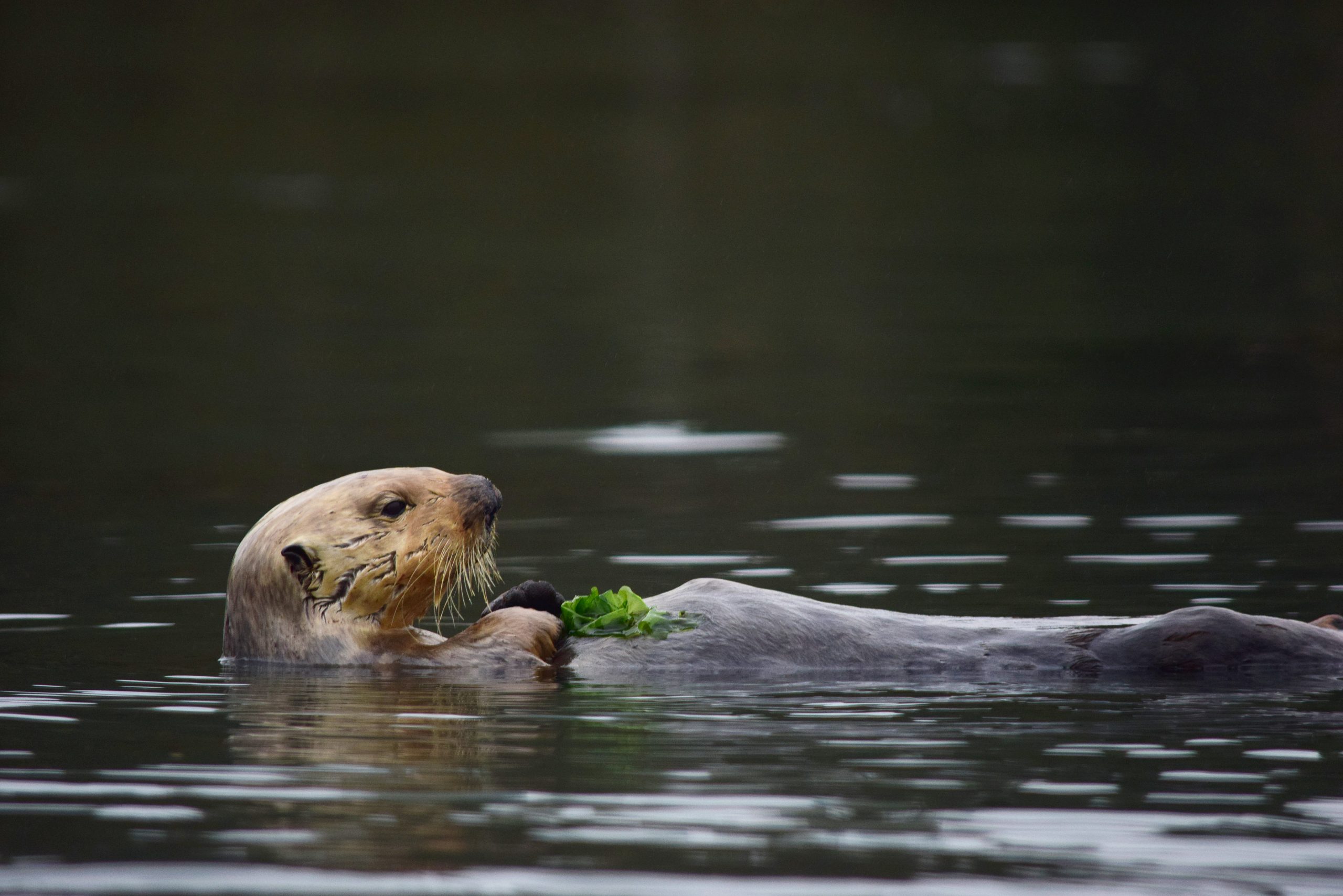Sea otters’ homecoming to their former habitat in a Central California estuary has delivered a remarkable payoff in conservation efforts — erosion of the area’s creekbanks and marsh edges have slowed on average by 69%.
In a study published today in Nature, scientists show that the reintroduction of sea otters, some of the Elkhorn Slough’s top predators, is an ecological success. Despite facing intense stress from excess nutrients, changes in water flow and rising sea levels that drive high erosion levels of the salt marsh’s edges, this estuary’s health is on the rise thanks to the otters’ insatiable appetite for marsh crabs.

“This is a solutions-oriented paper that tells us there are manageable actions we can take to produce positive results,” said Christine Angelini, Ph.D., one of the study’s authors and director of the Center for Coastal Solutions at the University of Florida. “In this instance, restoring the otter population was achievable through sustained conservation efforts, and as a result, we are now unlocking several decades of benefits.”
This act of conservation has been successful as the sea otters consume the shore crabs that burrow along the creek margins and eat the marsh roots, which lead to marsh erosion and collapse. Until the reintroduction of the otters in the mid-1980s, the crab population had exploded for decades after sea otters were hunted to the brink of extinction by fur traders and driven out by human activities.
“It would cost tens of millions of dollars for humans to rebuild these creekbanks and restore these marshes. The sea otters are stabilizing them for free in exchange for an all-you-can-eat crab feast,” said Brian Silliman, Ph.D., Rachel Carson Distinguished Professor of Marine Conservation Biology at Duke University’s Nicholas School of the Environment.
This is the first documentation of the far-reaching benefits that come from reintroducing top predators to their former habitat — it changed the geomorphology of an entire ecosystem and brought stability during a time of collapse. This leads researchers to now ask: Could similar results be championed in ecosystems worldwide?
“Reintroducing the sea otters didn’t reverse the losses, but it did slow them to a point that these systems could restabilize despite all the other pressures they are subject to,” said the study’s lead author Brent Hughes, Ph.D., associate professor of biology at Sonoma State University. “That suggests this could be a very effective and affordable new tool for our conservation toolkit.”

To test the impact otters had in this ecosystem, researchers conducted large-scale surveys across 13 tidal creeks and small scale-field experiments around five tidal creeks, over a period of six years. To compare marsh creeks before and after sea otter colonization, Angelini designed a caging system to exclude otters from some test sites while allowing them to recolonize others.
“As a graduate student in biology at UF, I had been setting up these types of cages and manipulating access to predators and their prey in salt marshes all over the Southeastern U.S., so I had the skill set,” Angelini said. “I’ll never forget building all the cages in the parking lot of the estuary out in California. And all these years later, we now see these amazing results.”
The CCS is providing similar experiential training to students in its program, laying the foundation for the next success stories of persistent, long-term research and conservation, said Angelini.

“All these challenges can feel unsurmountable,” Angelini said. “This study indicates to us that, if we truly understand the ecosystem and know what levers to pull, we can see significant benefits to the health and stability of these systems.”
Related:
Sea otters’ homecoming to a California estuary shows payoff in conservation efforts
—
By Megan Sam

